WEDNESDAY
Roast Chickens | Herbed Pan Gravy | Boiled Yukon Gold Potatoes | Peas

Chicken…more often than not, finds itself as a supporting cast member, rather than in the starring role, in the world of daily dinner theater. We roast and simmer it to make stock {the work~horse of many kitchens, home as well as professional}, turn it into soup which nourishes us when we are ill, prepare it as a second place consolation award when other prize-winning cuts of meat {standing rib roast, crown roast of pork} fall outside budgetary restrictions…even it’s cousin, the turkey receives top-billing at the holiday dinner table…but, I say it is high time we give this versatile bird it’s rightful spot on center stage, directly under the spotlight.
Unlike so many other cuts of meat, chicken can handle a wide variety of preparation methods…roasted, braised, fried, grilled, poached, stuffed, pounded {heck, we even stick the poor thing over a beer can}…with great success. Not to mention it is a virtual blank canvas for a multitude of sauces, dressings and sides. But, like so many other natural beauties, I find chicken is at it’s best when trimmings are few and the preparation is simple. Like a good vanilla ice cream {an opus of cream, sugar and a vanilla bean}, a chicken, simply roasted, is a testament to the marriage of a few quality ingredients.
For several years, I have been roasting chickens using this method from Alice Waters and it produces perfectly cooked, moist, tender chicken with lovely golden-brown skin…EVERY. SINGLE. TIME. So, when I came across this article at Food52 which touted a recipe for “The World’s Best Roast Chicken”, inspired by Thomas Keller, I found myself getting excited at the prospect of a showdown between those two culinary icons right here in my own kitchen.
The two recipes are quite similar using the same few ingredients…organic chickens, olive oil, salt and pepper. Chickens are rinsed and thoroughly dried {an important step as the extra moisture will prevent the chicken from developing a crunchy skin during the cooking process} and given a coating of olive oil, salt and pepper…
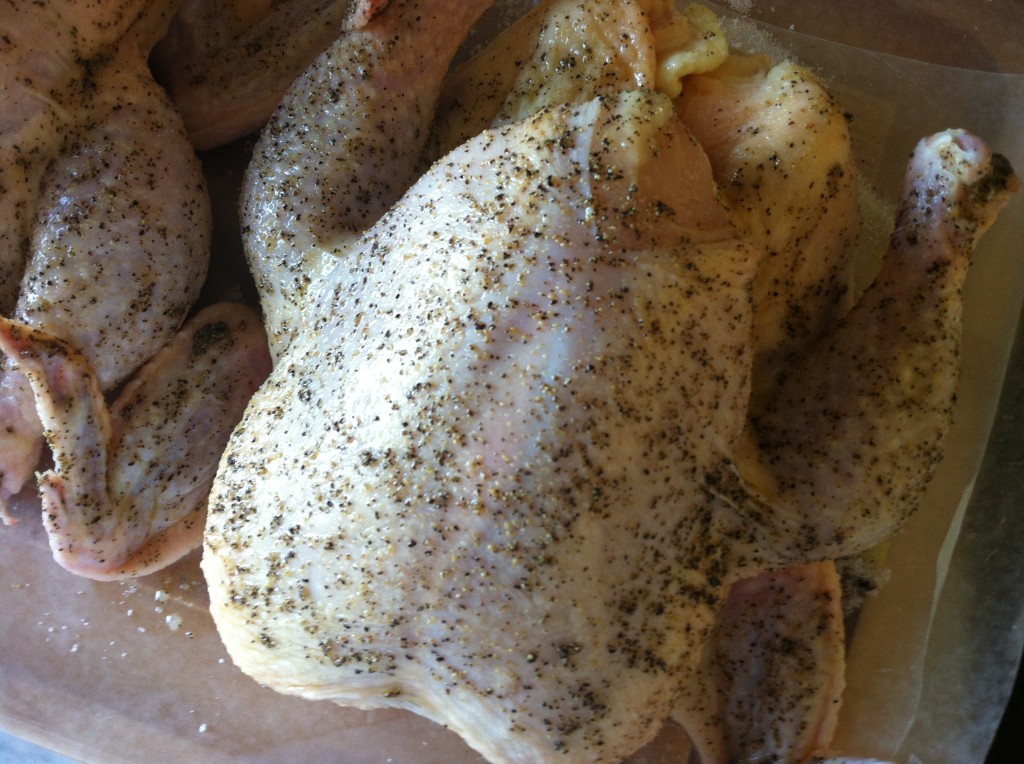
But a slight difference appears in the cooking method. Alice Waters’ advocates a lower cooking temperature {400°F} and rotating the birds {twice} during the cooking process. The method inspired by Thomas Keller sets the oven temperature a bit higher {480°F} and instructs NOT to open the oven for the first 45 minutes at which time you can begin to check for doneness. Our two birds took less than an hour {55 minutes} to finish cooking and they emerged from the oven with gorgeous amber-colored skin…
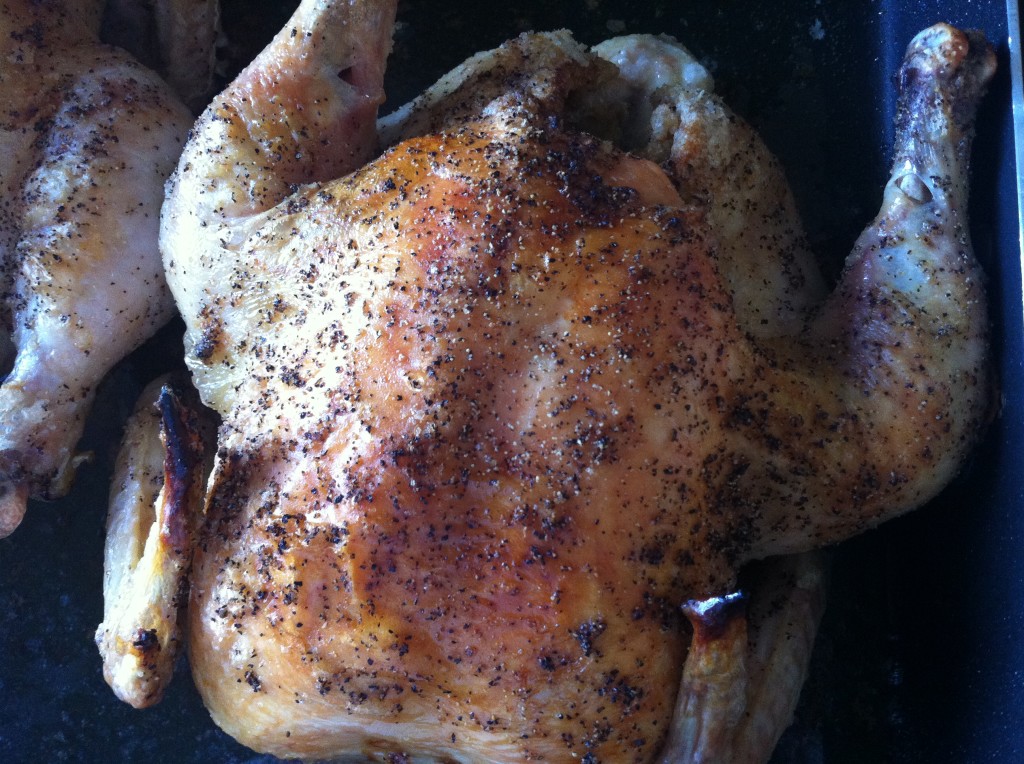
Both chefs highly favor complementing roast chicken with herbs and tonight fresh thyme makes it’s contribution to the pan gravy. The pan drippings produced from the chickens during the cooking process are the foundation for this wonderful sauce which adds just a few other ingredients {butter, thyme, garlic and white wine}…
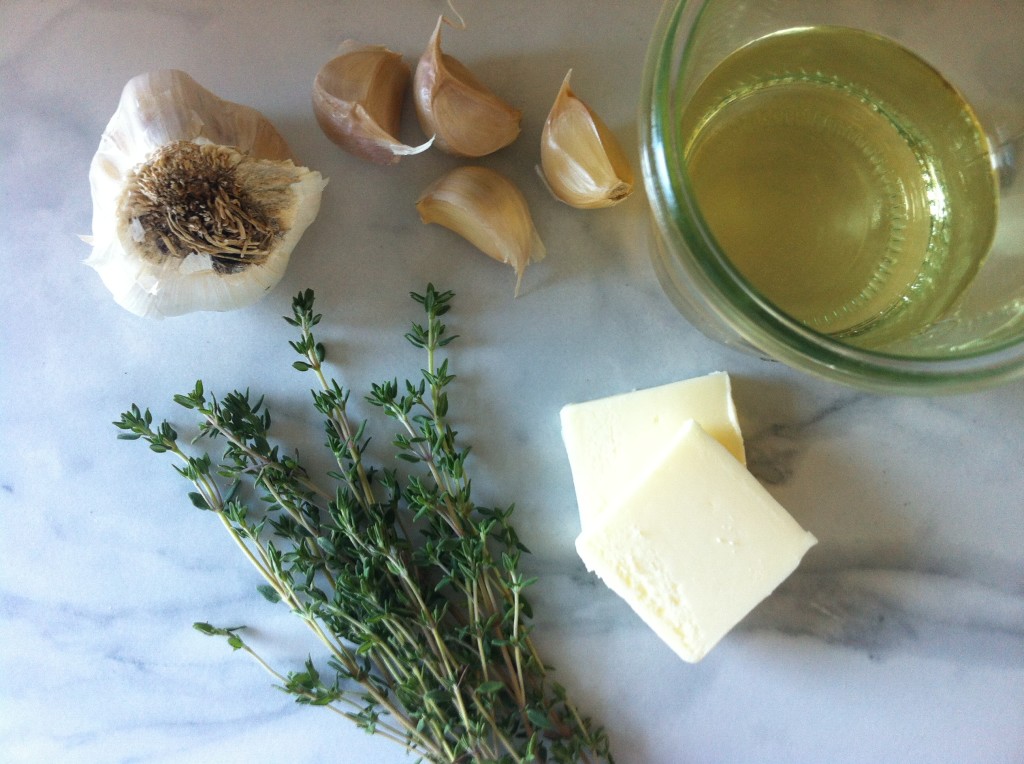
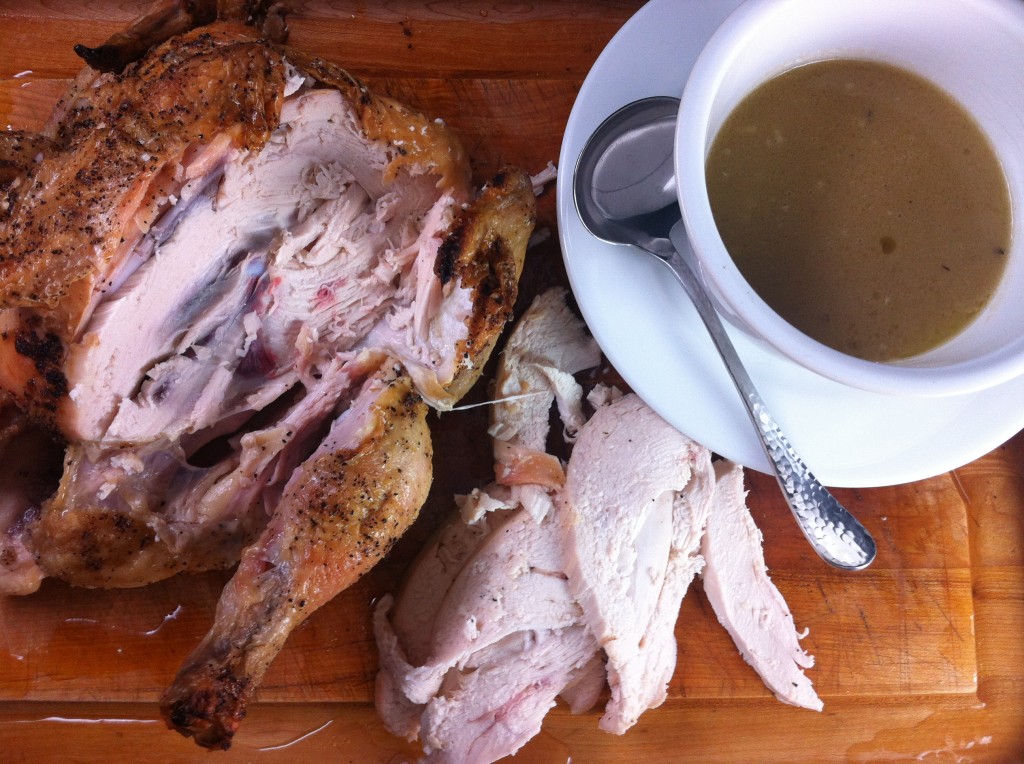
Now, I had every intention of preparing mashed potatoes, along with peas, to accompany our chicken this evening…
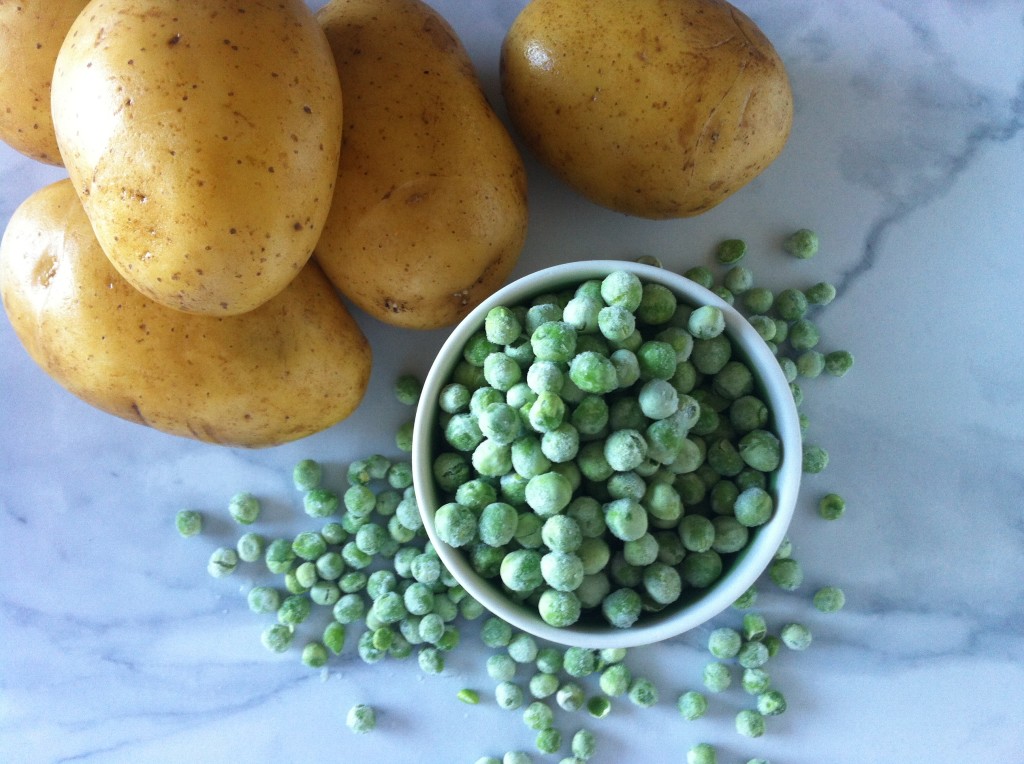
But, after tasting the AMAZING pan sauce I decided to simply boil the potatoes and serve {skin and all} with a drizzle of the gravy. The result was INCREDIBLE!
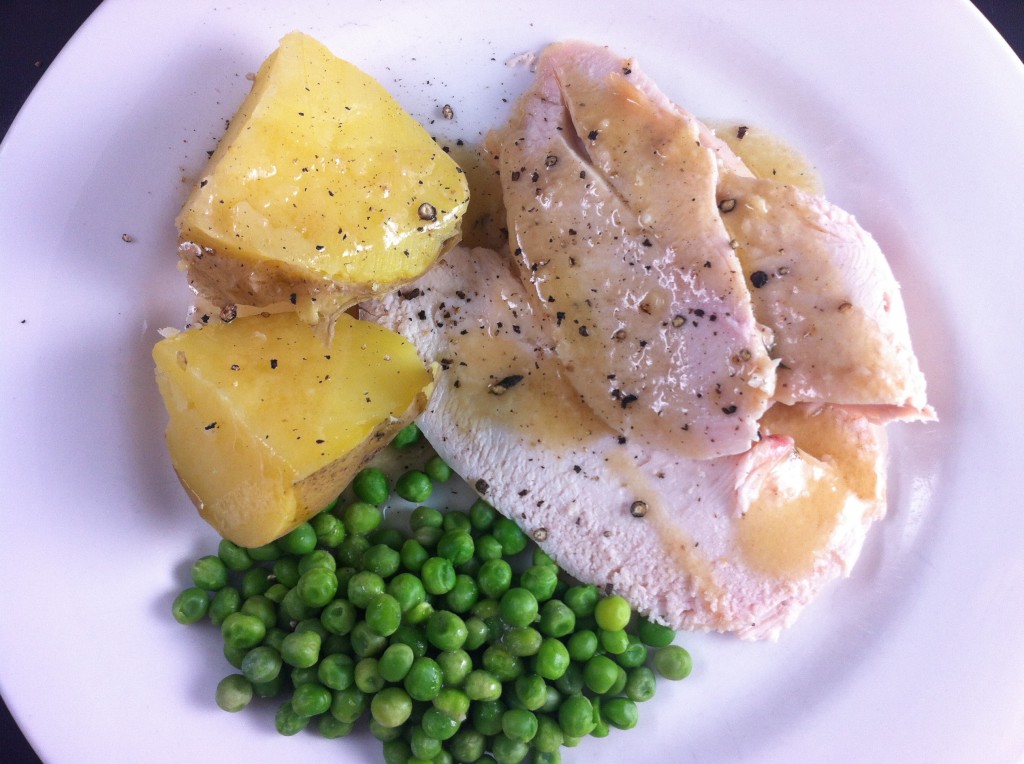
Roast Chicken with Garlic & Herb Pan Sauce {adapted from Food52} Serves 5-6
- 2 chickens, 3-4 pounds each, preferably organic or free-range, brought to room temperature
- Kosher salt and pepper
- ¾ cup olive oil
- 2 tablespoons unsalted butter
- 4-6 large sprigs of thyme
- 4 large garlic cloves, peeled pushed through a garlic press
- ½ cup white wine
- additional butter and flour to make a roux {if thicker pan sauce is desired}
- Heat the oven to 480° F. Pat the chickens dry inside and out {if you want an extra crispy skin, leave the raw chicken in the fridge uncovered overnight after you’ve patted it dry and then bring it to room temperature}.
- Put the chickens on a board or a large platter and generously season the inside of the birds with salt and pepper. Drizzle a little olive oil in the cavity as well.
- Drizzle the rest of the oil over the chickens, and rub it all over so that it’s evenly coated. Generously salt and pepper the chickens all over, making sure to get into all the nooks and crannies.
- Transfer the chickens to a heavy roasting pan just big enough to hold them both and place the pan in the oven. Don’t open the door for at least 45 minutes, when you can start to test the birds for doneness. {The chicken is cooked when you pierce the thickest part of the thigh with a sharp knife, and the juices run clear.} When done, remove the pan from the oven and transfer the chickens to a carving board. Let the chickens rest while you make the pan sauce.
- To make the sauce, put the roasting pan on the stove over medium-high heat. Add the butter to the drippings in the pan, and once it melts add the thyme and garlic. Cook, stirring frequently, for about a minute.
- Add the wine to the pan and scrape up all the brown bits with a wooden spoon, stirring them into the sauce. Let the wine cook down for one to two minutes.
- Add a cup of boiling water, stir well, and let the sauce reduce for about 5 minutes. Taste and add more salt if necessary (if you’ve salted your chicken enough, this probably won’t be necessary). At this point, if a thicker gravy is desired prepare a roux {equal parts softened, NOT MELTED, butter and flour…I used 1 tablespoon each, butter and flour} and whisk into the pan sauce.
- Cut the chicken into pieces and serve with the warm pan sauce drizzled over the meat or in a bowl nearby for dipping.
Who won the culinary showdown? In the end, I must admit to a tie. Both recipes produce such wonderfully tasty, moist meat with crunchy, salty skin. A slight nod goes to Alice Waters’ version as I have used her recipe a countless number of times with consistently perfect results. Give one {or both} of the recipes a try and I guarantee that you, too, will be singing chicken’s praises!


